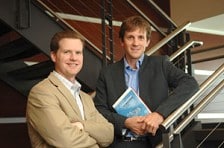Cloud Computing Takes Shape

.floatimg-left-hort { float:left; } .floatimg-left-caption-hort { float:left; margin-bottom:10px; width:300px; margin-right:10px; clear:left;} .floatimg-left-vert { float:left; margin-top:10px; margin-right:15px; width:200px;} .floatimg-left-caption-vert { float:left; margin-right:10px; margin-bottom:10px; font-size: 12px; width:200px;} .floatimg-right-hort { float:right; margin-top:10px; margin-left:10px; margin-bottom:10px; width: 300px;} .floatimg-right-caption-hort { float:left; margin-right:10px; margin-bottom:10px; width: 300px; font-size: 12px; } .floatimg-right-vert { float:right; margin-top:10px; margin-left:10px; margin-bottom:10px; width: 200px;} .floatimg-right-caption-vert { float:left; margin-right:10px; margin-bottom:10px; width: 200px; font-size: 12px; } .floatimgright-sidebar { float:right; margin-top:10px; margin-left:10px; margin-bottom:10px; width: 200px; border-top-style: double; border-top-color: black; border-bottom-style: double; border-bottom-color: black;} .floatimgright-sidebar p { line-height: 115%; text-indent: 10px; } .floatimgright-sidebar h4 { font-variant:small-caps; } .pullquote { float:right; margin-top:10px; margin-left:10px; margin-bottom:10px; width: 150px; background: url(http://www.dmbusinessdaily.com/DAILY/editorial/extras/closequote.gif) no-repeat bottom right !important ; line-height: 150%; font-size: 125%; border-top: 1px solid; border-bottom: 1px solid;} .floatvidleft { float:left; margin-bottom:10px; width:325px; margin-right:10px; clear:left;} .floatvidright { float:right; margin-bottom:10px; width:325px; margin-right:10px; clear:left;}
Cloud computing. The concept seems abstract and the jargon a bit technical, but when explained correctly, the mechanics behind cloud computing start to take shape, and the details become a little clearer.
For example, consider the development of utility companies. Decades ago, when manufacturers were drafting plans to build new plants, most site plans included power-generating substations to help power the plant. But as time passed, fewer manufacturers wanted to build their own power stations due to the costs and maintenance associated with them. In turn, a lot of manufacturers began to outsource their power-generating needs to larger service providers, such as MidAmerican Energy Co. Large utility companies were offering the right amount of power, at the right time and for the right price; at the same time, the plant could save money, time and labor and not have to worry about upkeep of the substation.
Now, think of cloud computing in a similar manner – except in the form of server space, computing services, data storage and software hosting. Any company that doesn’t want to invest money, time or labor in maintaining an information technology (IT) structure within its walls can outsource those services to a larger provider, which in this case would be a data center, or more technically, a cloud.
“Cloud computing is kind of like putting a bow on everything; putting all those IT things together and putting an application around it,” said Mark Kittrell, co-founder and vice president of development at TEAM Technologies.
A group of five IT professionals from Sogeti USA LLC, an IT consulting agency with operations in West Des Moines, and Microsoft Corp., which claims it still plans to build a data center in West Des Moines, explore the concept of cloud computing in more depth in the book “Collaboration in the Cloud: How Cross-Boundary Collaboration Is Transforming Business.” In that book, Forrester Research Inc. defines cloud computing as “buying IT capacity and applications as needed from a utility service provider,” while another analysis firm, Gartner Research Inc., defines cloud computing as “a style of computing where massively scalable IT-related capabilities are provided ‘as a service’ across the Internet to multiple external customers.”
Both of these definitions emphasize cloud computing as an IT service that is provided by a larger-scale operation, similar to the manufacturing plant and the utility company. However, this concept of outsourcing data storage, server hosting, Web-based applications and all IT services has a lot of chief information officers (CIO) worried, especially when it comes to keeping the company’s information secure.
Erik van Ommeren, an author of the aforementioned book and director of innovation for Sogeti USA’s international research group, said a lot of CIOs’ worries are due to a lack of awareness and knowledge about cloud computing. Randy Reed, vice president of Sogeti’s Des Moines operations, said the same is true here in Greater Des Moines. Reed said one question his clients almost always ask in regard to cloud computing is “How secure is it?”
“The biggest (concern) is always security – how can we trust Company XYZ to do this for us?” he said. “So as a consulting company, I think a lot of this is just helping educate our clients on why does this make sense, talking through some of the concerns they have and helping them in a cost perspective as to why it makes sense.”
Van Ommeren said most businesses believe that if they outsource their server capacity or data storage to a cloud, the company’s information is more susceptible to hackers. Yet in his book, van Ommeren pointed out that this is a myth and that most often, information is compromised within a company due to a mishap by an employee.
“The myth is if you do it yourself, it’s much more secure, and that’s not definitely true,” he said. “If you look at the breaches that happen, very often it is your very own employees that breach security. If you look realistically, internal data centers don’t have all that good a record because the statistics of external data centers are usually much better and much more reliable, and they have much better procedures in place for security, but it’s just that uncertainty, the new unknown.”
Van Ommeren believes that once Microsoft follows through with its proposed data center in West Des Moines, a lot of local business owners will become more open to the idea of cloud computing. He even suggested that giving tours of the data center once it’s complete could be one of the best sales tools for cloud computing.
“I definitely believe that proximity to a data center will add to the trust,” he said. “From a technology and usage perspective, it doesn’t actually matter, but if I see it, I am more likely to trust it, which is the case with lots of things still. Only when people see it do they believe it.”
Both Reed and van Ommeren believe the same is true for the amount of money a company could save by outsourcing IT processes to a cloud. For instance, van Ommeren said companies that only have a seasonal need for increased server capacity could benefit greatly by outsourcing to a data center.
“If you have a very seasonal need for capacity, so that once a year you have an enormous peak in traffic – you are helping people file their taxes, which happens around April – so then you need a lot of server power and a lot of capacity and a lot of computing power, and you need 100 machines to run that, but the rest of the year not that much happens so you only need two, the rest of the year you have 98 servers do nothing,” he said. “So in that situation, you would want to be able to switch on and off capacity from somewhere else, and that is where the big providers are really competing right now.”
Van Ommeren believes it’ll take a big name to earn the trust of businesses, pointing out that companiessuch as Microsoft and Google Inc. have established themselves within the technology industry and already have built up a sense of trustworthiness with the public. However, Kittrell said the size or the name of the company isn’t as important as the number of companies that are providing this type of service.
“I’ve been on numerous calls where people have asked me, ‘Are you worried that Google or Microsoft are going to be competitors for you?’ and I say, ‘No,'” Kittrell said. “The more people that are in it, the more people actually consider it. Obviously Microsoft does things globally that obviously a regional provider like us could never do – they have centers all over the world – but on the other hand, because we are more regional, we have a lot more depth of staff in the area and the ability to do things in a more customized way.”
Last July, TEAM announced plans to build a $14 million data center on a five-acre parcel at the Crossing at Alice’s Road in Waukee, and prior to that, Google announced plans for a data center in Council Bluffs.
“Des Moines is not a top 10 IT market in the country, but it is right on the cusp of being one of those,” Kittrell said. “You have TEAM and you have Microsoft and you have Google (all in Iowa). With these capabilities, this might be enough to push it into that.”
Currently, Reed said, there aren’t a lot of companies in Greater Des Moines that use cloud computing, but he remains optimistic that in the next few years it will be as common as outsourcing electricity generation to a utility company.








